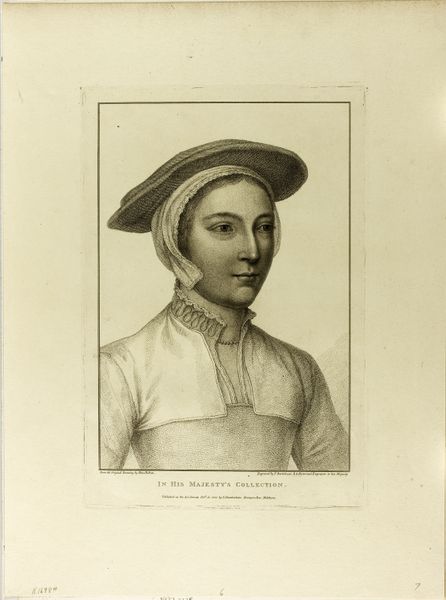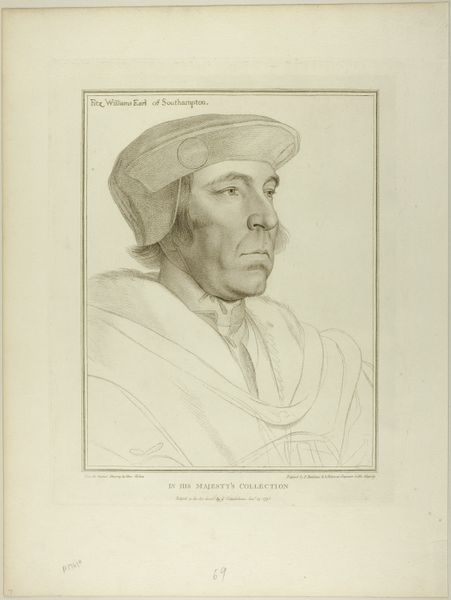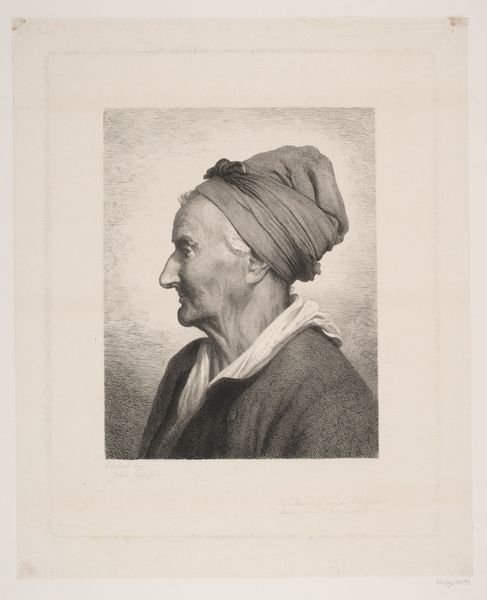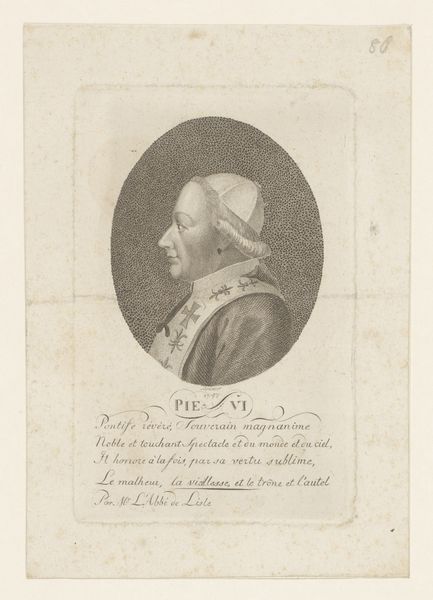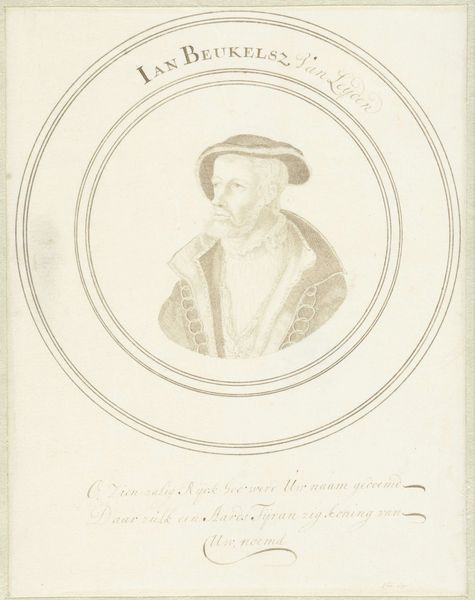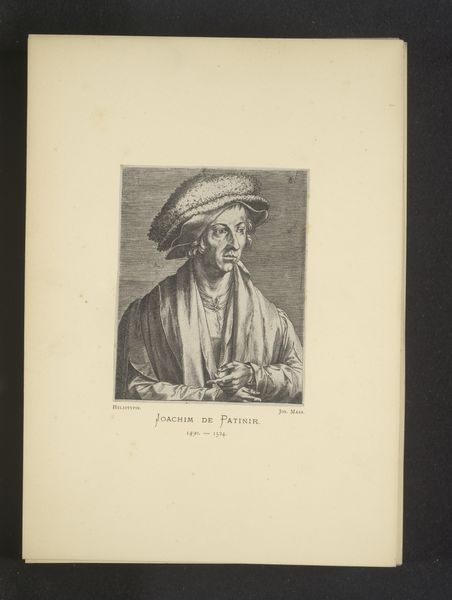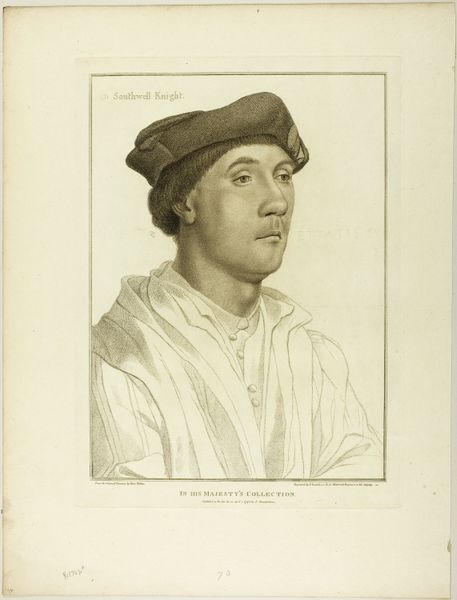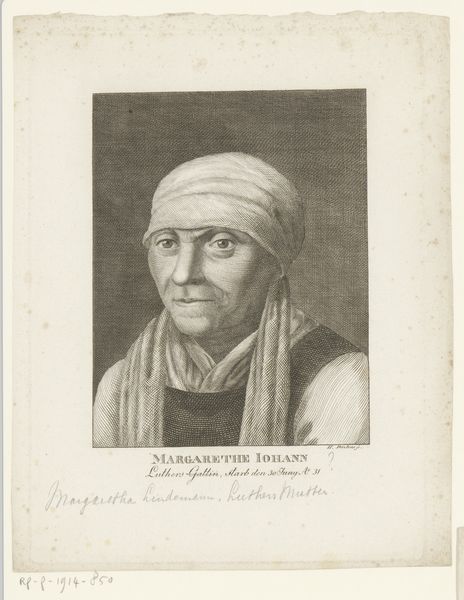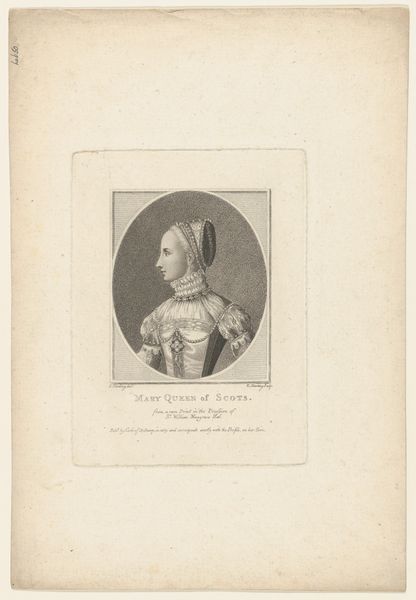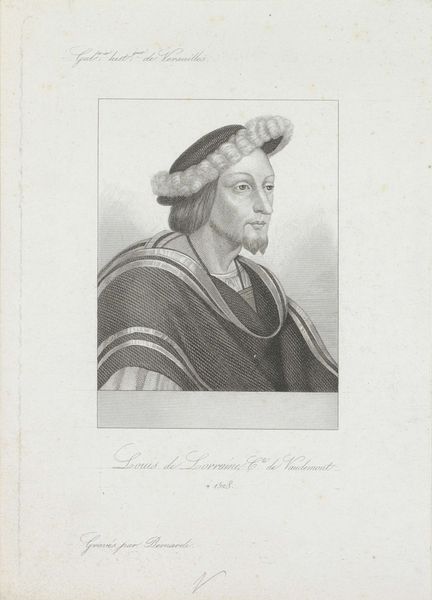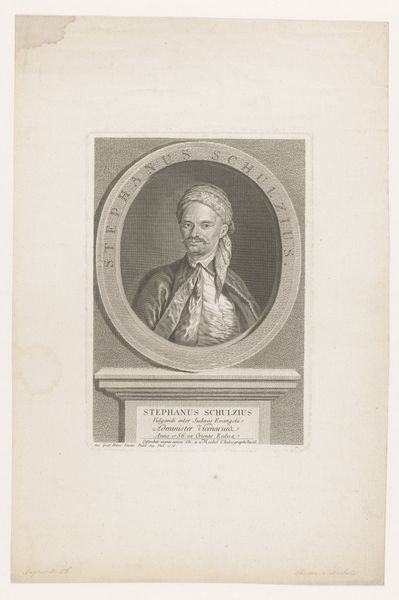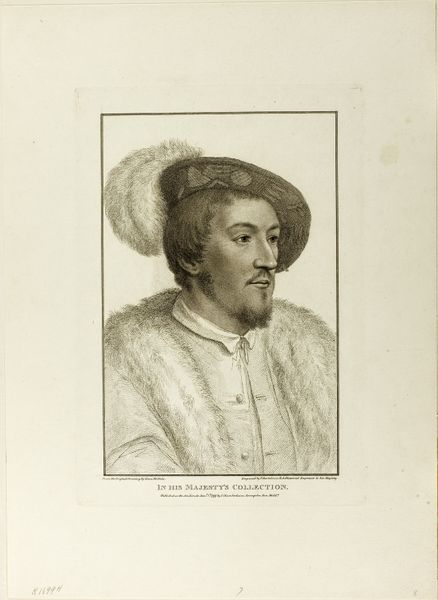
drawing, print, paper, dry-media, engraving
#
portrait
#
pencil drawn
#
drawing
# print
#
classical-realism
#
paper
#
dry-media
#
pencil drawing
#
portrait drawing
#
history-painting
#
academic-art
#
engraving
Dimensions: 377 × 241 mm (image); 429 × 280 mm (plate); 541 × 413 mm (sheet)
Copyright: Public Domain
Curator: Here we have Francesco Bartolozzi’s “Portrait of a Peasant Woman,” made in the late 1700s. It's a delicate engraving, rendered with incredible detail on paper. Editor: It’s strikingly direct. There's an almost uncomfortable level of intimacy achieved through those subtle gradations of tone in the drawing. Her expression seems guarded, yet present. Curator: Yes, the gaze certainly holds power. As a portrait of a peasant, consider the symbols Bartolozzi chose— the simple, but immaculate clothing. There is a subtle idealization in how she is portrayed. Her posture erect, almost dignified. The large brimmed hat and tightly wrapped headscarf, could signify regional or group identity at this time. Editor: Absolutely. I immediately think of the power dynamics inherent in representation. Who gets to depict whom, and what choices do they make? How does this romanticized image contribute or conflict with lived experiences of women laborers in that era? Look at that plain dress, the minimal adornment save for one rosette: this is far removed from the lives of nobility. Is the rosette itself symbolic of a specific allegiance or social grouping? Curator: Very possibly, the rosette may represent something as specific as allegiance during times of sociopolitical instability, as in Revolutionary France or even Britain. And while seemingly simple, the lines around the face are meticulously etched and convey more than just realism, and almost a virtue. Editor: Right, and thinking about audience: consider that an elite, likely male, gaze was dictating this representation. While celebrating the dignity of labor, this image remains safely within established class boundaries. She's the subject of study, not an agent of her own story. And in “His Majesty’s Collection," the label seems to reinforce this objectification. Curator: But let’s remember the context. Bartolozzi's engravings served the purpose of dissemination; this may well be the version many had access to versus an original painting only seen by the elite. He popularized images and ideas, which holds its own power. Editor: That's a vital point; its presence in a collection, however, still speaks to power and ownership in very specific ways. So in this subtle print we're seeing artistic intention, class tensions, and the circulation of imagery – all contained within those fine, elegant lines. Curator: It’s like peering into a layered historical moment. I think studying this print encourages us to ask bigger questions about the individuals portrayed and our perception of them as a collective group. Editor: Agreed, by engaging critically with historical representation like this, we hopefully can be sensitive in the retelling of other women's stories in the present.
Comments
No comments
Be the first to comment and join the conversation on the ultimate creative platform.
